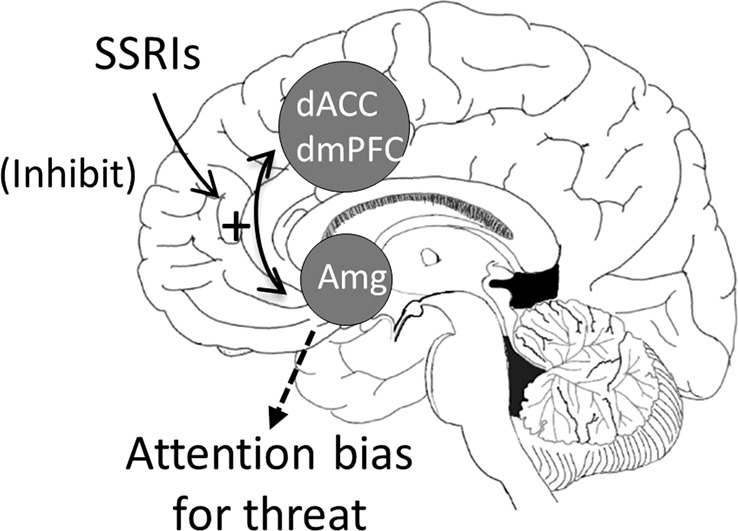Fig. 3.

Proposed model of attention bias for threat in anxiety. Increased bidirectional coupling between the dorsal anterior cingulate/dorsomedial prefrontal cortex (dACC/dmPFC) and amygdala (amg) promotes threat bias. Coupling is transiently activated during anxiety states in healthy controls, facilitating the detection of threat. However, the coupling is chronically engaged in pathological anxiety, leading to maladaptive threat bias. Lowering serotonin has a similar effect as induced anxiety: it increases dACC/dmPFC–amygdala coupling. By increasing serotonin, SSRIs may reduce attention bias for threat via inhibition of dACC/dmPFC–amygdala coupling
